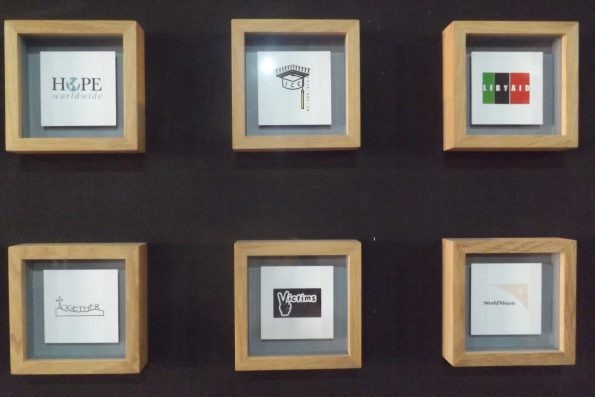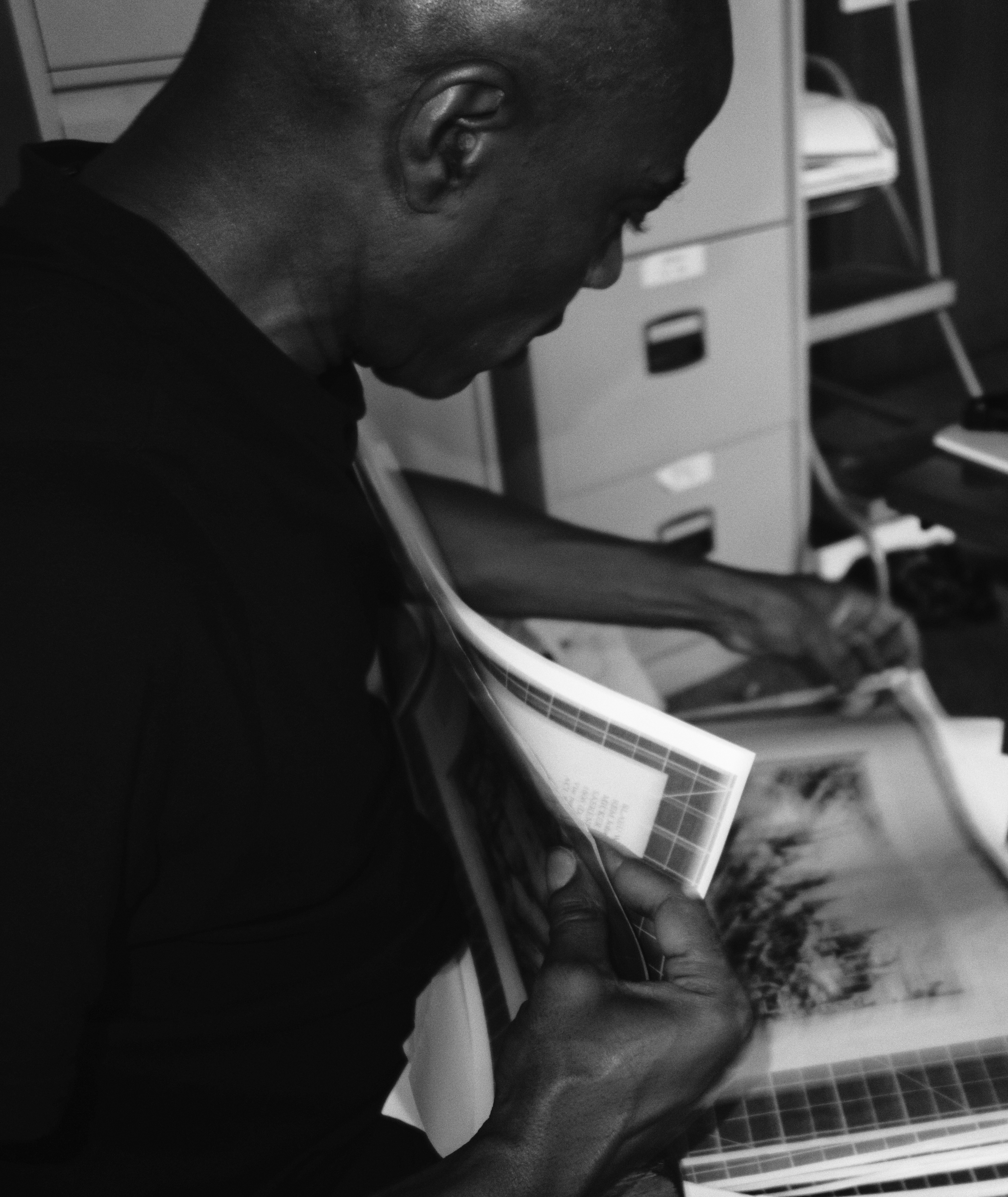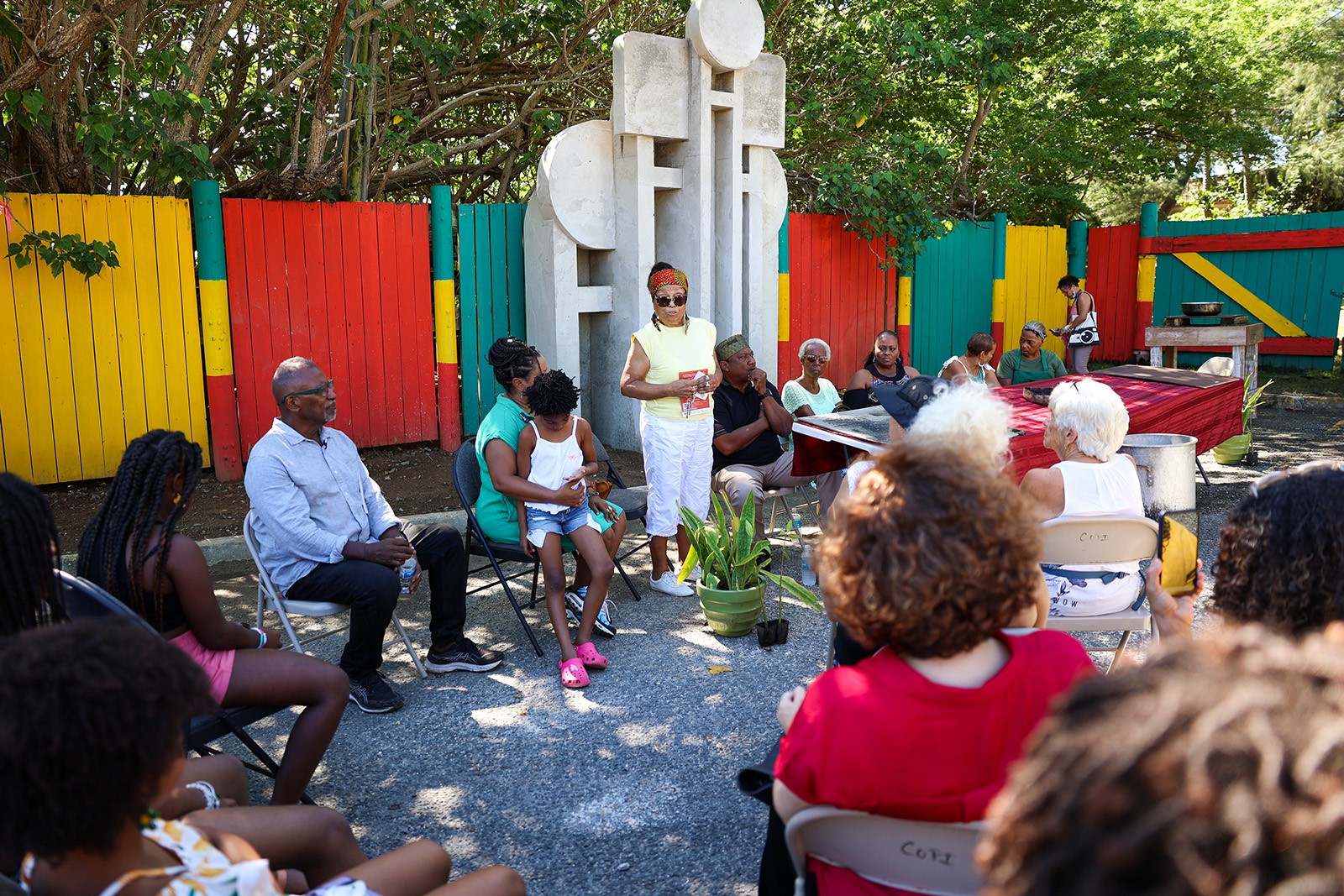Deconstructing Logos

21 May 2014
Magazine C& Magazine
5 min read
Kimani wa Wanjiru: How does it feel to be at the Biennale? Sam Hopkins: As this is the first Biennale that I have participated in, I was slightly nervous before arriving. But it has been a wonderful experience, a real pleasure, and both the curators (Smooth, Kader and Elise) and the other participating artists have …
Kimani wa Wanjiru: How does it feel to be at the Biennale?
Sam Hopkins: As this is the first Biennale that I have participated in, I was slightly nervous before arriving. But it has been a wonderful experience, a real pleasure, and both the curators (Smooth, Kader and Elise) and the other participating artists have been warm and friendly and there has been a genuine sense of family.
KW: Did you imagine that your work would be on a continental stage like this?
SH: The biennale is by application, so of course I hoped I would be selected, but I didn't really think I would be, so it was a fantastic surprise when I heard that I was.
KW: It is work touching on the work of NGOs. What inspired it?
SH: The work which I exhibit is a direct result of living and working in Nairobi over the last few years. During that time I co-founded Slum TV, a grassroots media collective based in Mathare, and in the process of doing so I met with many NGOs. I was struck by the very particular language that these NGOs worked with, which sometimes, but not always, appeared to be empty rhetoric. Often this language seemed to reduce complex issues down to keywords such as Sustainability, Capacity-Building, Synergies, Beneficiation and Upscaling. Whilst perhaps these keywords are useful in the context of Development, they did not seem suitable or helpful to the art project which we were developing, which was interested in setting up an experimental media project, without anticipated goals and outcomes, in Mathare. Nevertheless, in Kenya, our work was always limited to the NGO discourse.
KW: What is the significance of the logos?
SH: On the one hand a logo reveals how an organization chooses to represent itself; on the other hand, they represent certain subconscious assumptions about a whole industry. To take an example from a related sector, why is the UNESCO logo composed of Greek columns? This is the UN organization for world culture, so why should a Classical European symbol stand for world culture? The logos of NGOs in Kenya pose similar questions. Why do we have organisations in Kenya called ‘Hope’, ‘Concern’ and ‘Empathi’? What do these names reveal about the assumptions of the Development sector? They were intriguing as they seemed to distill the iconography of the industry and reveal the expectations of the belief system that underpins the whole NGO project.
KW: Why did you use the logos, though they don't really tell the story of the organizations?
SH:It is true that the logos do not tell the entire story of the organizations, and I am not commenting on the whole organizations. I am a visual artist and as such am interested in representation. In this situation I am specifically interested in how these organizations choose to represent themselves. My strategy with this piece has been to mix real logos of real organizations with fake logos of organizations that do not exist. The idea is to introduce an element of doubt into the viewer so s/he is not sure which are real. This fictionalizing is designed to make you re-engage with all of the logos, it presents them in a new context. Hence you look at organizations called ‘Hope’, ‘Concern’, ‘Hope for the African Child Initiative’, ‘Empathi’ and you wonder, can these be real names?
KW: You talk about a blurred line insofar as charity, development or aid is concerned. What is your personal take on this?
Sam: The development world is complex and complicated and I am in no place to critique its effectiveness. It is a heterogeneous sector so I do not think it makes sense to make generalizations about it. As a visual artist I am interested in the representation of this sector, be it in the logos, the adverts and the films commissioned. And, whilst the organizations are varied, the representation tropes are similar.
KW: We you aware that there is a new legal framework that is supposed to provide guidance in the way NGOs now being referred to as public benefit organizations will be run?
SH: I was not.
KW: Are you aware that in spite of the new law being assented to by the former president, the current government is reluctant to operationalize it?
SH: I was not.
KW: Does this have an impact on your work as it evolves?
SH: If this legal framework leads to a more critical and engaged position about how the development sector represents itself, then this will certainly impact on my work. To re-iterate, I am not generalizing about how these NGOs are actually run, or what they do. I am interested in the images they use to communicate.
www.samhopkins.org
This interview was first published here.
Kimani wa Wanjiru is a journalist andthe Managing Editor/Projects Director of Kymsnet Media Services, Kenya’s premier news agency that specializes in Culture, the Arts and environment.
Read more from

On Ghosts and The Moving Image: Edward George’s Black Atlas

Confronting the Absence of Latin America in Conversations on African Diasporic Art

On Exile, Amulets and Circadian Rhythms: Practising Data Healing across Timezones
Read more from

Irmandade Vilanismo: Bringing Poetry of the Periphery into the Bienal

I Am Monumental: The Power of African Roots

